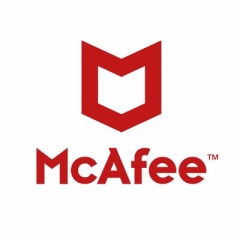Cloud computing is one of the next significant stages in the Internet’s evolution, providing the means through which everything – from computing power to computing infrastructure, applications, business processes to personal collaboration – can be delivered to us as a service wherever and whenever we need.
Whether it’s Software as a Service (SaaS), Infrastructure as a Service (IaaS) or Platform as a Service (PaaS), cloud computing has been with us long before the media had a catchy name for it.
The landscape of a typical business no longer reflects ones that were operating several years ago. The advancements in communication, collaboration, information and/or currency exchange/processing and the speed in which they are done have truly created new opportunities to the modern enterprise. But these benefits have unearthed many questions and challenges-especially to the overall security of an enterprise whose reach is no longer just the extent of their firewall.
I have dedicated the more than 15 years of my career managing DOD business technology risk in large and small organizations. I’ve served in a variety of roles across heavily regulated industries, successfully leading all aspects of IT security programs, including policy and procedure management, oversight and control, strategy, architecture, development, and training.
During this period one of the greatest challenges have been end-to-end enterprise security, primarily protecting sensitive information from unauthorized manipulation and disclosure by B2B and B2E who pose a substantial threat due to their knowledge and authorized access to corporate internal systems and data.
Training and education is a critical step towards the reduction of insider threats, but alone it’s simply not enough.
Once I understood the nature of the security threat within my organization’s enterprise, I was ready to minimize its effects. The primary objectives during containment activities were to mitigate personal risk to employees and customers then mitigate risk to the organization.
Fortunately, many years ago my organization adopted a top-down Host Based Security System (HBSS). This security baseline is a flexible, commercial-off-the-shelf (COTS)-based application. It monitors, detects, and counters against known cyber-threats to my organization’s Enterprise. At the heart of HBSS is McAfee’s ePolicy Orchestrator (ePO).
McAfee ePolicy Orchestrator (ePO) is widely acknowledged as the most advanced and scalable security management software in the industry. It has enabled me to connect industry-leading security solutions to my organization’s enterprise infrastructure to increase visibility, gain efficiencies, and strengthen protection.
Whether it’s securing the mobile workforce, the virtualized data center, complex applications, or the distributed enterprise, security has never been more challenging or important. McAfee ePolicy Orchestrator (ePO) Networks has allowed me to balance security with access to network resources, information sharing and remote connectivity. Additionally its end-to-end security solutions has helped my team and I connect, protect and manage across the entire network infrastructure, from the endpoint device all the way to the data center, and allowed us to maintain total control.
Finally, enterprise security has been simplified by leveraging a holistic Information Assurance approach, McAfee ePO fills the gap that few enterprise and cloud assurance platform fills by bridging business and technology concerns that aligns IT-GRC and Enterprise GRC.
Disclosure: I am a real user, and this review is based on my own experience and opinions.







